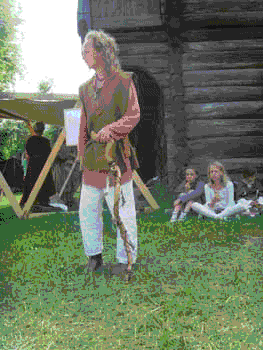Yet another summer-tour coming up and this year as every year I’ll be going wide and far. Mostly I’ll be doing shows, both as storyteller and as musician, in the re-enactment scene of Norway, but there are some other events on the list too. As the last couple of years I am going to team up with Benny Braaten, together we call our selves “Folket bortafor nordavinden” or “The People Beyond The Northern Winds”, playing music from ancient to modern times. My stories this year will be as always, full of energy and humor.
Some special events and workshops are to be announced at a later time.
- 20.-22. May – Viking Thing at Tingvatn – Music and stories.
- 11.-12. June – Viking and Medieval Market at Lygra – Music.
- 17.-19. June – Hafrsfjord Viking Market – Music and stories.
- 1.-3. July – Nordic Vikingmarket at Borre – Music and stories.
- 8.-10. July – Bronseplassen Viking Market – Musicand stories.
- 15.-17. July – Sarpsborg International Viking Sestival – Music and stories.
- 18.-21. July – Midgardsblot Metal Festival – Music.
- 25.-28. August – Hove Vikingmarket – Music and stories.
- 2.-4. September – Gjallarstadir Vikingmarket Lillestrøm – Music and stories.
- 9.-11. September – Tønsberg Viking Festival – Music.
- 6.-9. October – Urkraftfestivalen – Music and a workshop on the subject of Tantra.



